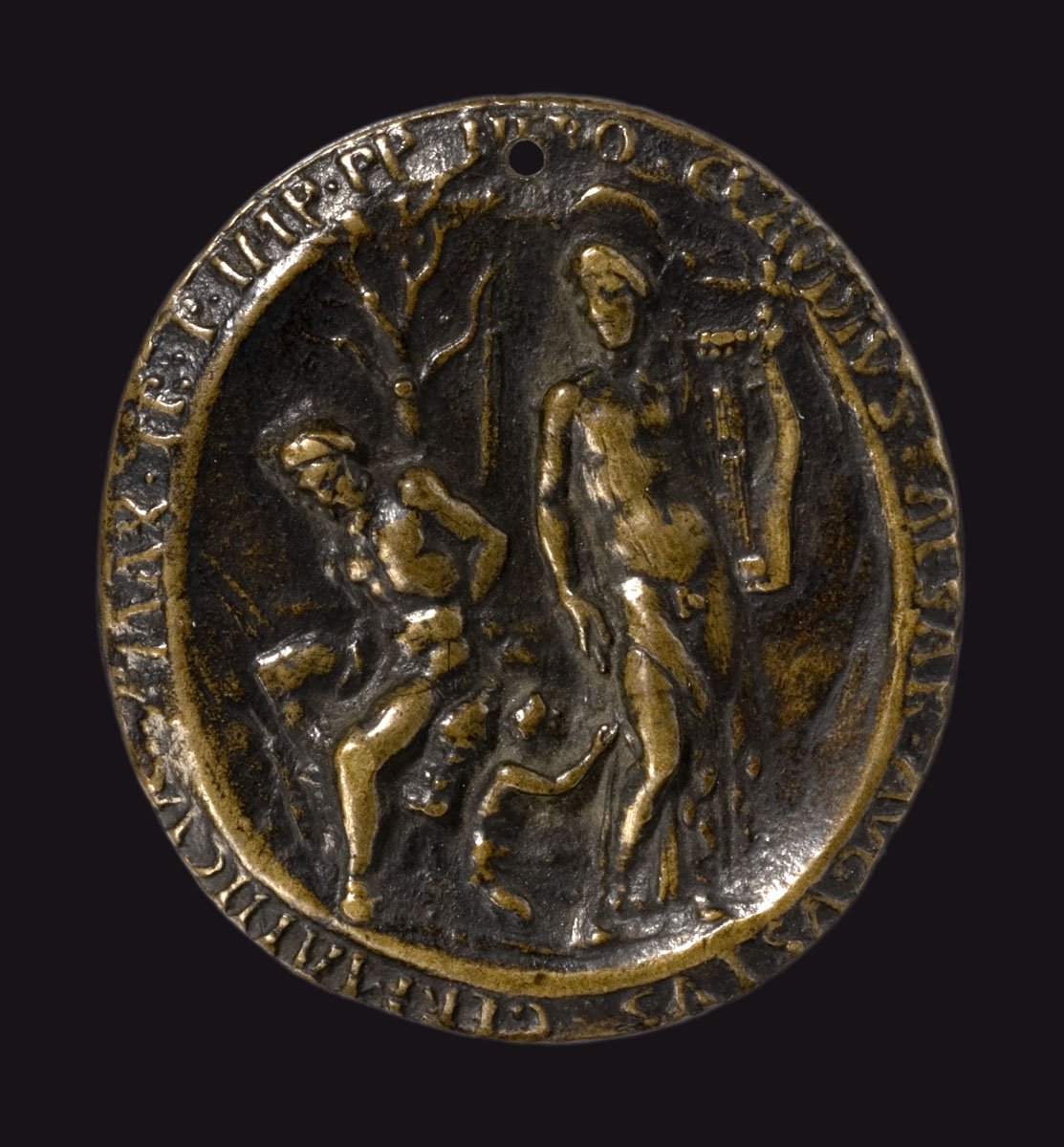
Apollo and Marsyas
Sculptures
| Artist | |
|---|---|
| Culture | Italian |
| Date | ca. 1650 |
| Object type | sculpture |
| Medium, technique | bronze |
| Dimensions | 44.5 × 26 × 26.5 cm |
| Inventory number | 5352 |
| Collection | Sculptures |
| On view | Museum of Fine Arts, First Floor, European Art 1600–1700 and British Painting 1600–1800, Gallery V |
In Florence in 1590, Grand Duke Ferdinand I allowed Giambologna to set up a workshop next to his house in Borgo Pinti. After the master’s death, the workshop was inherited by Pietro Tacca, and later by his son, Ferdinando. As head of the Borgo Pinti workshop Ferdinando Tacca was responsible for organising festivities and religious ceremonial for the Medici court. He designed many ingenious machines for theatrical performances and festivities, and he was also involved in Florence’s first theatre, the Teatro della Pergola. Because a large portion of his time was taken up with temporary decorations, he was long considered primarily as a stage designer, engineer and architect. Only recently has his authorship of a group of sculptures been recognised. Somewhat perplexingly, although he was the head of the grand ducal sculpture workshop and foundry in the Borgo Pinti workshop, the centre of bronze casting in Florence, many years passed before a small bronze was attributed to him.
Today he is credited with an extensive series of small bronzes on mythological subjects, including the Budapest Venus and Adonis. In the story from Ovid, the goddess of love tried to protect her beautiful mortal beloved Adonis: the youth was fatally wounded by a wild boar during a hunt. The small bronze depicts the episode – frequent in both Renaissance and Baroque art – in which Venus tries desperately to restrain her love from setting out on the fatal hunt. The Budapest bronze is notable for the typically graceful figures of Ferdinando Tacca, while the refined, extremely polished working of the surfaces is an excellent example of the technical perfection achieved by bronze casters in the seventeenth century.
Text: © Miriam Szőcs
Petrovics, Elek – Meller, Simon, Ferenczy István bronzgyűjteményének kiállítása, Országos Magyar Szépművészeti Múzeum, Budapest, 1917, p. 15.
Balogh, Jolán, Katalog der ausländischen Bildwerke des Museums der bildenden Künste in Budapest, IV – XVIII. Jahrhundert: 1. Textband Bd. 1, Akadémiai Kiadó, Budapest, 1975, p. 138-139., no. 174.
This record is subject to revision due to ongoing research.